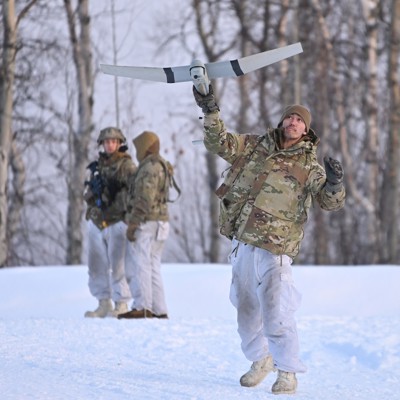The Pentagon unveiled a new Arctic strategy aimed at countering the impact of Sino-Russian cooperation in the Arctic and overcoming the effects of climate change that are accelerating activity in the region. Defense officials said Monday that new technologies such as autonomy and artificial intelligence will make Arctic operations more achievable in the future.
The Department of Defense released its first Arctic strategy in 2013. However, the newly released Arctic strategy is the first to emphasize increased cooperation between Russia and China in the region.
“Through the 13 research projects China has conducted in the Arctic so far, [3 icebreaking vessels] “The People’s Liberation Army Navy (PLAN) has conducted a variety of activities, including testing unmanned underwater vehicles and polar-capable fixed-wing aircraft. PLAN ships have also demonstrated their capability and intent to operate in and around the Arctic through joint exercises with the Russian Navy over the past few years,” the strategy states.
But there’s another shift in how the Pentagon views the Arctic: New technologies like robotic automation and artificial intelligence are making it easier for the Pentagon to continually monitor activity in places where it would be difficult to send human operators. The Arctic is emerging as a testing ground for new unmanned concepts.
“We need to ensure that even with unmanned systems, they are at least long enough to survive, or are inexpensive enough to be worthwhile for the missions that they’re put into, despite their expendable nature,” Deputy Secretary of Defense Kathleen Hicks said at the Pentagon on Monday. “That means a lot of research, development and testing, and that’s where we’re focusing our efforts, exploring where unmanned systems can provide value.”
But there are many potential use cases for AI and autonomy in the Arctic, she said. “Domain awareness missions lend themselves to an unmanned systems approach in any domain. So sensing missions, [intelligence, surveillance, reconnaissance]So that’s a clear area where we can apply some of the work that we’re doing in our department.”
The Pentagon is already applying artificial intelligence to satellite and weather data to improve operations in the Arctic, Iris Ferguson, assistant secretary of defense for Arctic and global resilience, told reporters.
“One of the few examples recently of what we’ve done effectively is look at Coast Guard imagery, about 12,000 images, to detect targets at sea with our Coast Guard partners, and also to detect submarines and [Piper] “It’s an aircraft, so we try to utilize the best technology available and, of course, do it responsibly and legally.”
Still, significant research is still needed to build a better physical presence in the Arctic using robotics and unmanned systems.
“It’s a really difficult place to operate on the ground, or operate on a manned platform, so being able to rely on a remote platform makes a lot of sense. But it’s really difficult to operate a remote platform with weather and connectivity issues. So we’re looking at how we can test and do some things.” [research and development] It’s important to ensure these platforms are operational.”

